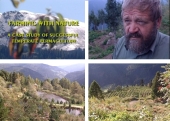
 1
1




 2
2




Whole Systems Design, Consultation, Education, Group Facilitation
Profile Link: Permaculture Global
Director: Permaculture Research Institute, USA
Holistic Management Certified Educator




![Filename: keyline-concept.jpg
Description: Alternative keyline [Thumbnail for keyline-concept.jpg]](/t/16470/a/5538/keyline-concept.jpg)
Old men have dreams, Young men have visions.
 2
2




Patrick Mann wrote:I'm very impressed by the examples ... why is it that I never hear about Keyline except on permies.com? It seems like a well kept secret, when really it should be a part of every farmer's / rancher's toolkit.
More Info at http://www.rtpermaculture.org/ http://www.permacultureglobal.com/users/2660-neil-bertrando Classes in Reno, NV http://www.urgc.org/#!permaculture/c4fw Email: neilbertrando@gmail.com
 2
2




Ian Camacho wrote: Could this be an alternative to keyline without a tractor and keyline plow? Dig diversion swales off contour with the highest point in the primary valley and with the lowest point on the primary ridge. On the primary ridge create swales that are on contour to re-hydrate the primary ridge. Multiple diversion swale and swale systems would be put above and below the key-point to simulate the keyline cultivation. this is all speculation but i suspect that this alternative wouldn't work as well in a pasture as keyline cultivation but but would be implemented in more of a woodland system, where a tractor and plow would be harder to maneuver in between established trees
There is an attached file with a picture to help with my explanation.
More Info at http://www.rtpermaculture.org/ http://www.permacultureglobal.com/users/2660-neil-bertrando Classes in Reno, NV http://www.urgc.org/#!permaculture/c4fw Email: neilbertrando@gmail.com




How permies.com works
What is a Mother Tree ?








Whole Systems Design, Consultation, Education, Group Facilitation
Profile Link: Permaculture Global
Director: Permaculture Research Institute, USA
Holistic Management Certified Educator




neil bertrando wrote:
If you replaced your proposed swale with a ridgepoint dam, you could add some spreader drains for gravity irrigation. the drawing you present is exactly what Yeomans' Keyline Design system suggests for filling dams. If you wanted to fill a series of dams, you might have one diversion drain falling to the next valley over to fill a keypoint dam....
cheers,
Neil
Old men have dreams, Young men have visions.




CA, Southern Sierras, alt. 4550 feet, zone 9ish. (still figuring it out), 3 mo. grow season. Regular wind to 20 mph. SANDY soil with scrub oak,pine,and juniper. 2 seasonal creeks.
 1
1




Brenda
Bloom where you are planted.
http://restfultrailsfoodforestgarden.blogspot.com/




Whole Systems Design, Consultation, Education, Group Facilitation
Profile Link: Permaculture Global
Director: Permaculture Research Institute, USA
Holistic Management Certified Educator




CA, Southern Sierras, alt. 4550 feet, zone 9ish. (still figuring it out), 3 mo. grow season. Regular wind to 20 mph. SANDY soil with scrub oak,pine,and juniper. 2 seasonal creeks.




CA, Southern Sierras, alt. 4550 feet, zone 9ish. (still figuring it out), 3 mo. grow season. Regular wind to 20 mph. SANDY soil with scrub oak,pine,and juniper. 2 seasonal creeks.




More Info at http://www.rtpermaculture.org/ http://www.permacultureglobal.com/users/2660-neil-bertrando Classes in Reno, NV http://www.urgc.org/#!permaculture/c4fw Email: neilbertrando@gmail.com




Whole Systems Design, Consultation, Education, Group Facilitation
Profile Link: Permaculture Global
Director: Permaculture Research Institute, USA
Holistic Management Certified Educator




CA, Southern Sierras, alt. 4550 feet, zone 9ish. (still figuring it out), 3 mo. grow season. Regular wind to 20 mph. SANDY soil with scrub oak,pine,and juniper. 2 seasonal creeks.








taking things to their illogical extreme, one conversation at a time...
















Whole Systems Design, Consultation, Education, Group Facilitation
Profile Link: Permaculture Global
Director: Permaculture Research Institute, USA
Holistic Management Certified Educator








Whole Systems Design, Consultation, Education, Group Facilitation
Profile Link: Permaculture Global
Director: Permaculture Research Institute, USA
Holistic Management Certified Educator




CA, Southern Sierras, alt. 4550 feet, zone 9ish. (still figuring it out), 3 mo. grow season. Regular wind to 20 mph. SANDY soil with scrub oak,pine,and juniper. 2 seasonal creeks.
















More Info at http://www.rtpermaculture.org/ http://www.permacultureglobal.com/users/2660-neil-bertrando Classes in Reno, NV http://www.urgc.org/#!permaculture/c4fw Email: neilbertrando@gmail.com








Just call me Uncle Rice.
17 years in a straw bale house.




Yone' Ward wrote:If you have a 20 thick layer of sand and gravel on your place, like mine, it looks like Keyline Plowing would be a wasted effort as the gravel would quickly shift back into the cuts. Am I right?
More Info at http://www.rtpermaculture.org/ http://www.permacultureglobal.com/users/2660-neil-bertrando Classes in Reno, NV http://www.urgc.org/#!permaculture/c4fw Email: neilbertrando@gmail.com




http://bigsmallfarm.org/ - non-profit farm incubator - currently accepting applications
















Community Building 2.0: ask me about drL, the rotational-mob-grazing format for human interactions.




Freedom!









William Wallace wrote:Terracing and keyline irrigation work significantly different from each other, but they can be done together. Since keyline is done off of contour lines, you must terrace first, and then create your keyline contour lines from there.
Community Building 2.0: ask me about drL, the rotational-mob-grazing format for human interactions.

| I agree. Here's the link: http://stoves2.com |





